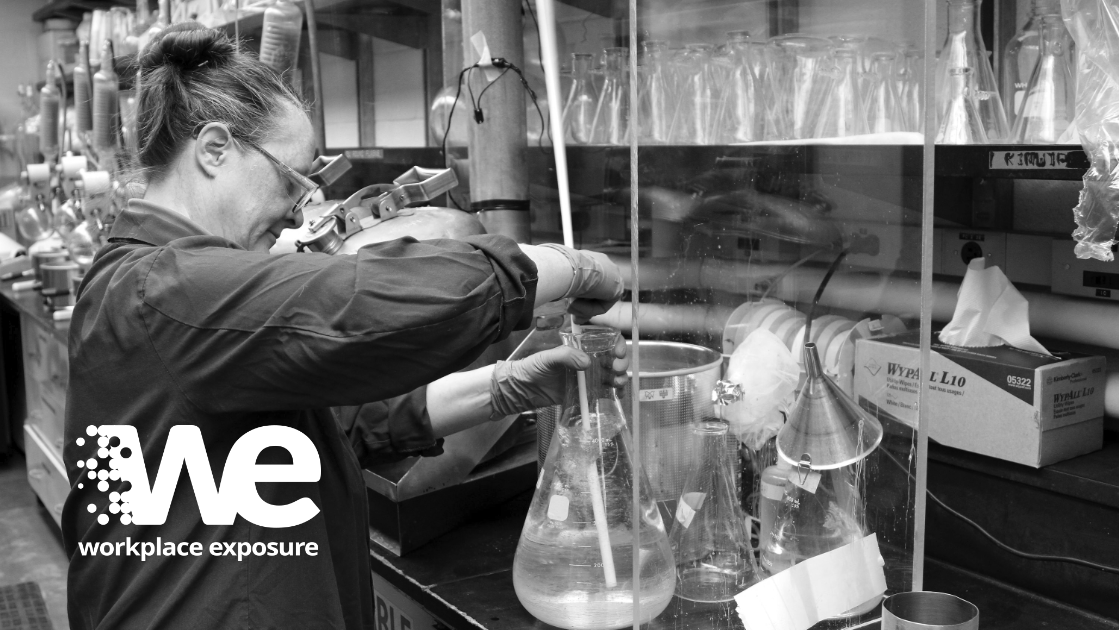Carcinogens at Work
Any substance that is capable of causing or aggravating cancer in humans or animals is labelled a carcinogen.
Some of these substances are inhaled, others enter through the skin or mucous membranes. Carcinogenic substances cause cancer by directly damaging the DNA of cells or by causing cells to divide at a faster rate than normal, and thereby increasing the chances that DNA changes and mutations will occur.
Does Every Exposure to a Known Carcinogen Result in Cancer?
Not every exposure to a carcinogenic substance inevitably leads to cancer. Many factors, including the extent and duration of the exposure, as well as the individual’s genetic background, can influence whether an individual exposed to a carcinogen will develop cancer at some stage in their lifetime.

Cancers caused by exposures to environmental carcinogens are more likely to occur in particular groups of the population, such as workers in specific industries who are routinely exposed to carcinogens at work.
This article provides guidance to support employers in their efforts to protect employees, visitors and customers from exposure to carcinogens in the workplace. It is also intended to raise awareness of the specific requirements under Control of Substances Hazardous to Health Regulations 2002 (COSHH) concerning working with carcinogens, mutagens and biological agents.
How To Assess the Risk of Exposure to Carcinogens in the Workplace
Employers must assess the risk of exposure to carcinogens in the workplace in the form of a risk assessment and set preventive measures that take into account all possible means of exposure, including the storage of chemicals and waste.
Safety data sheets and labels describe the hazards associated with substances, and provide information on storage, handling, emergency measures and risk management processes.
Employers are required to adjust the recommended measures to the specific conditions of their workplace, and to provide appropriate instructions and relevant training to workers regarding the potential risks to health and safety.
Training needs to also raise awareness of risks that are not visible and effects that may only materialise after an extended period of time.
The risk assessment requires regular revision, particularly when a change in the workplace has occurred, as this has the potential to introduce new carcinogens into the environment.

The toxicity of any new product must be checked before it is introduced and any changes to working procedures or methods must be carefully assessed.
It is important to remember that a substance currently regarded as acceptable may later be recognised as carcinogenic following new research.
Although carrying out a risk assessment is the responsibility of the employer, it is always advisable to consult an occupational hygienist, such as ourselves, as best practise.
Examples of Preventative Measures Against Carcinogenic Exposure
Employers must prevent exposure to carcinogenic substances in the workplace by implementing measures in a defined order of priority:
- Elimination is the most effective measure and can be achieved by making changes to the technology used or by adjusting the characteristics of the final product in order to remove carcinogens from the workplace entirely.
- Where elimination is not technically possible, substitution is the most desirable means of prevention. Employers can reduce the risk of exposure to workers by replacing a dangerous carcinogen with a safer substance, product or process, providing that this does not lead to other hazards with higher levels of risk.
- Where substitution is not possible, the employer should operate using a closed system that does not expose any carcinogens to the external environment.
- Where a closed system is not possible, the employer should reduce exposure to a minimum.
- If there remains a level of risk to workers’ health, specified areas should only be accessible to workers who are required to enter them.

In all circumstances, where a carcinogen is used, the employer must ensure that it does not exceed its workplace exposure limit value (WEL), that the number of workers exposed is kept to a minimum, and that both collective and individual prevention measures are implemented.
All risk areas must also be clearly marked, and adequate warning and safety signs displayed.
In order to minimise the risk of contamination, various provisions must be made available for workers, including appropriate protective clothing and separate storage places for work and non-work clothing, access to washing and toilet facilities, and appropriate, well-fitting, and well-maintained personal protective equipment, stored in a designated place.
If a worker is suspected to be suffering ill health as a result of exposure to a carcinogen in the workplace, health surveillance is required to be provided by the employer to the individual in question and to any other workers who have been exposed, and the risk must then be reassessed.
Workplace Exposure Limits for Carcinogens
A workplace exposure limit may be assigned to a substance because of the health risks associated with it.
Exposure limits are designed to control the effects of harmful substances, depending on the nature of the substance and the effects of exposure, and it is against the law to exceed this exposure limit.
Around 500 substances have WELs assigned to them, and these hazardous substances include carcinogens. Compliance with WELs should however be considered the minimum, and efforts should be made to lower exposure as much as possible below these values.
We’re Here to Help
At Workplace Exposure, we support employers in their efforts to protect employees, visitors and customers from exposure to substances hazardous to health, including exposure to carcinogens, as well as offer professional solutions and advice.
Find out more about our health & safety consultancy work or get in touch with us today.
Our approach
Get in touch with Workplace Exposure. Either give us a call on 0800 689 4386, or fill in our enquiry form to discuss your monitoring or consultancy requirements.
We’ll then provide you with a no-obligation proposal, we can often give an initial idea of fees whilst we discuss your needs.
Once you’ve accepted our proposal, we can then schedule the work.
Following our site visit we’ll provide you with a comprehensive report giving you advice, recommendations and control measures where appropriate. Implement the outcomes for compliance and a happier healthier workplace.
